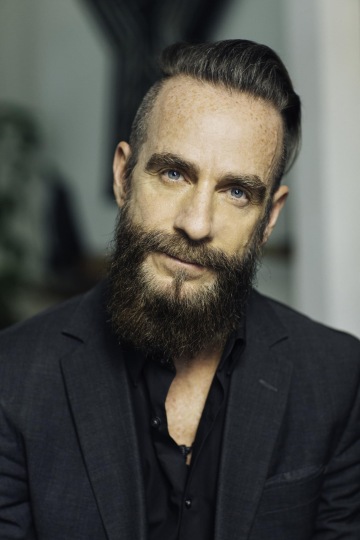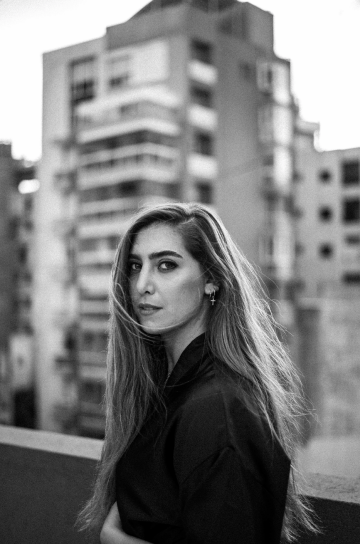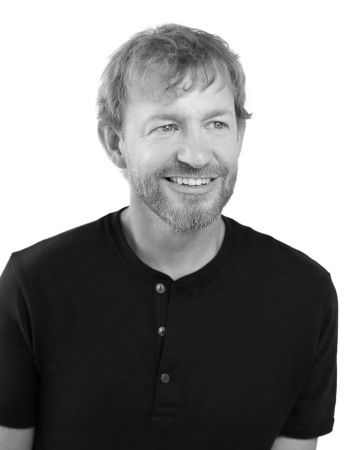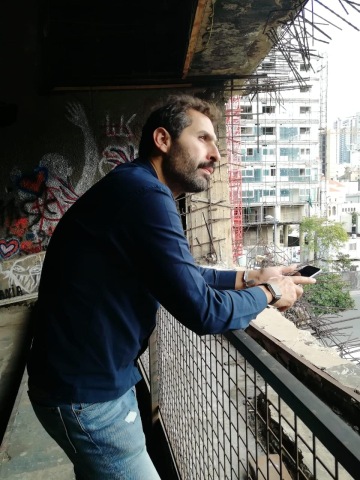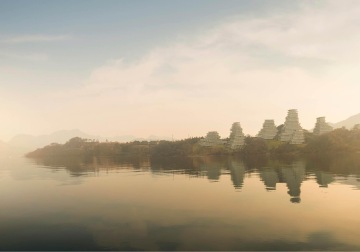
10 Bold Visions from Design and the City 2020
Our favorite quotes and ideas from our Design and the City guests seem to take design and its application, examining it from all angles—from mobility and smart cities to giving it a higher purpose and advocating for more diverse input—all to reframe how we can apply it to shape our built environments to better serve all those who inhabit them.
2020 has been a year—I think we can all agree. We made the hard decision to fore-go our annual event this year. We’ve deliberated on how to continue connecting city-makers in the midst of a pandemic and ultimately decided to channel our efforts into a different medium that shared the same goals: to connect people and ideas to improve the urban environment.
It was incredibly difficult to choose from our 13 released episodes because really, there were countless ideas and they are all worth a listen, but here is a list of our top ten ideas shared, and the minds they belong to:
1. Thomas Heartherwick on on Designing on a Human Scale
We don't see a distinction between architecture and urban design. The same verb applies—you design. You don't architect something, you design it.
We followed up reSITE 2019 REGENERATE with interviews from eight of our speakers. Thomas Heatherwick, founder of Heatherwick Studios, in conversation with ArchDaily’s Christele Harrouk, kicked off our very first episode of Design and the City talking about everything from his thoughts on designing human-scale cities and spaces to utilizing emotion as a function to his perspectives on regeneration, innovation, and inspiration—the episode is rich in ideas on making whole-hearted spaces.
2. Chris Precht on a New Generations of Architects
We create spaces that really reconnect to all of our senses. It creates different city centers. City centers not defined by banks or corporations but by health and vitality.
Studio Precht founder, Chris Precht gives stunning descriptions of rethinking our cities by rethinking our values. He makes a powerful case about how our cities create our consciousness, challenging the core of how they are organized, asking us to rethink them entirely. By placing our well-being and food production at the heart of our spaces, we can build cities, and therefore societies, "based on health and vitality."
He also reminds us that "we have a big problem with what and how we build", that if "everything looks the same then no one is inspired by it", and how we can use our spaces in our cities to create more consciousness. Chris represents a new generation of architects and his episode is definitely not one to miss.
3. Leona Lynen on the Case for Creating Incomplete Cities
We need to end the phase of centralized, top-down urban regeneration by the so-called experts and build structures that allow for everyday people to have a say in their immediate environment.
Leona Lynen came to us from the Berlin-based collective ZUsammenKUNFT that is an actor regenerating the 10,000 square meters Haus der Statistik. Located at Alexanderplatz in the heart of a city that has become an experiment in extreme gentrification—Berlin. The project is a prototype of how to approach urban regeneration projects from the bottom up.
She reminds us on the importance of working across city-making professions while "ending the centralized, top-down approach of building structures and allowing for everyday people to have a say in their immediate environment". Her goal: to make space of more "diverse, alive and incomplete cities."
4. Marianthi Tatari on Building Human-Centered Smart Cities
You can look at the whole discussion on smart cities out of making a profit, but also from the point of view of creating a more human city.
Smart cities came under fire during 2019 with the controversial Sidewalk Labs project on Toronto’s Waterfront, unearthing some important discussions about how we utilize technology in our publis spaces. UNStudio’s Marianthi Tatari makes the case for wielding this technology to benefit our cities and citizens, rather than exploit them for profit by commoditizing public space. She discusses the studio’s project, Brainport Smart District, and its use of smart technology to make the lives of its inhabitants better, while giving them ownership of their data, ultimately creating a human-centered smart city.
5. Christopher Cabaldon on Regeneration Cities and Transforming Communities
A city changes us as much as we also have to be ready for the city to shape us as humans.
Over the last 20 years as the current, sitting mayor of West Sacramento, Christopher Cabaldon has ushered in an entirely regenerated city. Even acting as a mentor to Pete Buttigieg, his applied urbanist policies have been a hallmark in transforming this once-declining industrial town into a thriving urban environment, setting an example of what a good urbanist mayor looks like.
He spoke on the exchange that happens in cities—that inhabitants shape their cities in just as much as the cities shapes its inhabitants, and the importance of maintaining that relationship by "unleashing people to do amazing things, and then allow the community to decide whether they want to embrace them". He also reminds us how regeneration is a means for transforming our cities, that they "can’t just be about the four walls—it’s got to be about the park and the place."
6. Ravi Naidoo on Giving Design a Higher Purpose
Design should be about that skill or facility to improve the quality of life, and I would like to uphold the highest purpose for design.
An advocate for "making a better world through creativity" and founder of one of the most complelling design conferences on the planet, Design Indaba, Ravi Naidoo asks us to step back and consider what design is actually for. He draws on compelling examples of how the application of design holds the power to improve the quality of life, and solve many of the world’s inequalities, taking it beyond it simply being “a handmaiden for consumption.”
7. Winy Maas on Dipping the Planet in Green
What it’s exposed is that we haven’t really built a city for ourselves, for the future, we haven’t built a place where we really want to live.
Winy Maas, co-founder of MVRDV and founder of The Why Factory, opened up our second season of of the podcast with his vibrant enthusiasm talking about making "physically and psychologically cool places", catalyzing architecture as an instrument to create the kind of cities we really want to live in—places that bring us joy. His Green Dip is based on the idea that we should cover our metropolis in green and "use our collective power to make the planet better."
He also spoke on how architecture facilitates urbanism and therefore, facilitates politics of cities and of countries—something we need not shy away from. It’s largely why he goes after sometimes controversial projects, such as the proposed Gazprom Neft headquarters, arguing that "criticism can lead to real productivity and the kind of change that can make our planet better."
8. Vishaan Chakrabarti on Creating an Architecture of Belonging
When the internal combustion engine was invented, it completely changed our worldview around the idea that the streets weren't for people, that streets were for cars.
Dean of the William W. Wurster College of Environmental Design at the University of California, Berkeley, and founder and creative director of Practice for Architecture and Urbanism (PAU), Vishaan Chakrabarti joined us for a discussion on the future of mobility in our cities that will make all the NUMTOTs rejoice. He approaches the problems with our use of cars in cities as a spatial one, reminding us that the streets aren’t for cars, they are for people.
He believes designers have a key set of responsibilities: "is to help people visualize ideas that are really hard to otherwise grasp", doing away with banal, homogeneous buildings that "make people reject density and urbanity"—all in creating an architecture of belonging.
9. Julia Gamolina on Breaking the Architect's Mold
No woman wants to be known as a ‘woman in architecture’ they just want to be known as architects and professionals and experts in their field of focus.
Madame Architect founder, Julia Gamolina has been creating more space for women in the fields of design and architecture, reminding us why these women are so much more than “female architect” (let’s just take a second and insert ‘male’ before ‘architect’ or ‘designer’, or any other profession for that matter, and realize how absurd it sounds).
What’s impressive about her story-telling is how she is creating a culture of profiling women in all stages of their careers, who, more often than not, have interesting multi-disciplinary approaches to their work. Her emphasis on "the value women offer just based on their life experiences, and the way they exist in the world, being different from men", and the potential that holds in shaping our built environment, has created a space where we can reimagine one that reflects the needs of everyone. It doesn’t just stop there—she is a true advocate for lifting others up, thinking about others’ professional development and others’ advancement. She said, “after you graduate from college, architecture is just like one big group project” —a reminder that it is about all of us working together.
10. Stefan Sagmeister on Beauty as Function
If you're creating things with only function in mind, not only will it be mediocre, but it also won’t function as well, as it would if you also added beauty.
Beauty. Iconic graphic designer, Stefan Sagmeister has made this word the pursuit in everything he does, down to the deconstruction of what that word means as it applies to design of all kinds. He makes the case that beauty is function and should be considered as so when designing anything. He speaks about how "we’ve created are spaces that nobody wants to spend time in." They are ones that "make us feel and behave terribly", arguing "there is an incredible cost to that. If so much of what is torn down or dynamited because, because nobody wanted to really live in it, then, ironically, it didn't really function."
Known for taking a year-long sabbatical every seven years, but as of 2019, he has officially embarked on a permanent one, ceasing to work with commercial clients any longer. Instead, he spends his time educating and reviewing graphic submissions on his Instagram, engaging with his community, and asking us all to "go out and make beauty part of our overall goals."
Written by Alexandra Siebenthal
Looking forward to 2021...
While 2020 has come to a close, our podcasts have not. We are looking forward to releasing conversations with Michel Rojkind (Rojkind Arquitectos), Christele Harrouk (ArchDaily), Michael Green and Natalie Telewiak (MGA Architects) and a very special reSITE retrospective with Marin Barry, in 2021 along with many more to be announced soon! Keep your ears ready and your mind open! You'll hear from us very soon.
More from Design and the City
Gary Hustwit on Why Design Is for Everyone
Our next guest, New-York based, Indie filmmaker, Gary Hustwit, on his iconic trilogy of design-focused documentaries: Helvetica, Objectified and Urbanized, his creative process, making design more accessible to everyone and his latest release, short-film, The Map.
East Meets West with Yoko Choy
Managing editor of Wallpaper* magazine China - Yoko Choy - is on a mission to translate insights from eastern and western design spheres into a common creative language. Listen as she discusses their similarities and differences with Beatrice Leanza, (MAAT), Jamie Wallace and Jee Liu (WallaceLiu). Photo courtesy of Damo Yang.
Creating Emotional Connections to Nature with Yosuke Hayano
Yosuke Hayano, principal partner for MAD Architects examined how the studio approaches every project with a vision to create a journey for people to connect with nature through architecture. Listen as he draws on specific projects that embody that connection on a macro and micro level. Photo courtesy of MAD Architects
Design and the City is Back!
Throughout 2020, many thoughts and questions have arisen in the cities close to our hearts. We’d like to discuss what challenges define the discourse today. In the new season of reSITE’s podcast, Design and the City, we will revisit all aspects of future-proof city-making.
